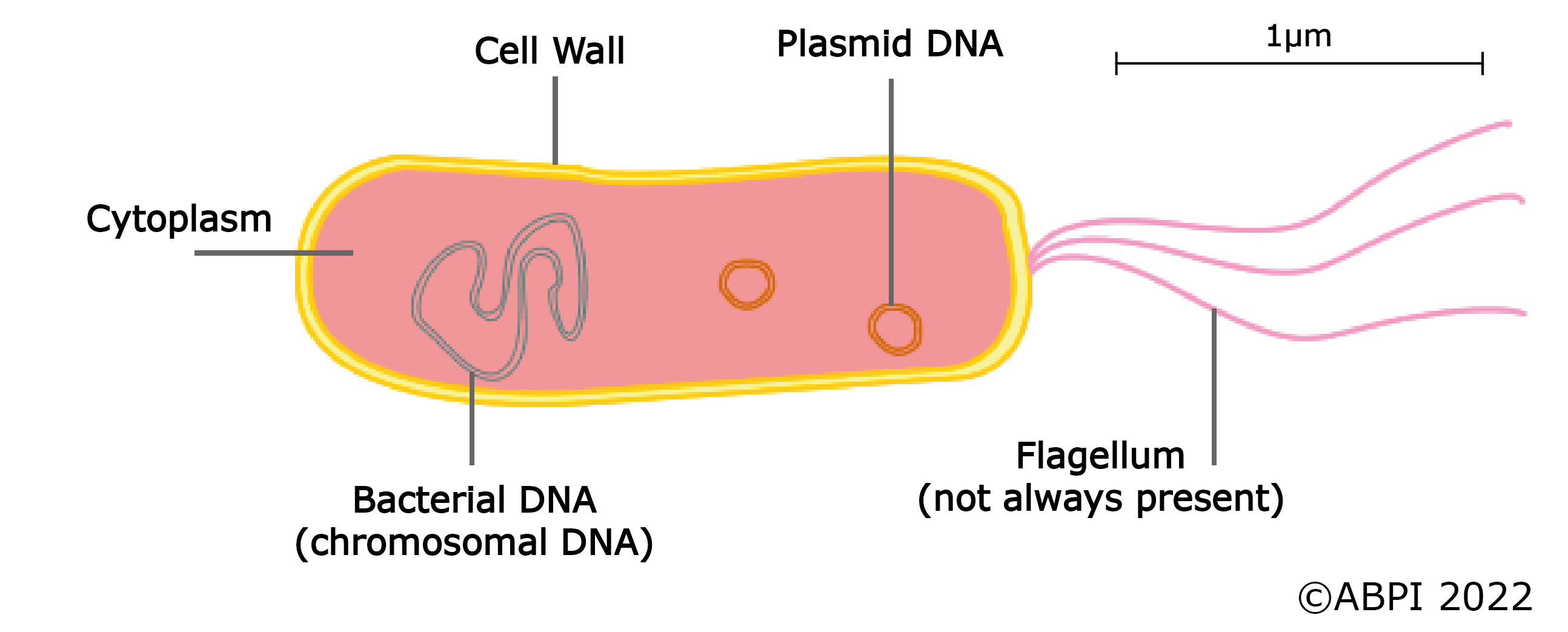This topic takes on average 55 minutes to read.
There are a number of interactive features in this resource:
 Biology
Biology
Bacteria are possibly the most numerous types of organisms on the planet. There are about 60 million people living in the United Kingdom. Many hundreds of times more than that number of bacteria will be living in your intestines at this moment!
Bacteria are very simple single-celled organisms. They contain a small amount of loosely-coiled DNA but do not have any visible nucleus. Like plant cells, they have a cell membrane and a cell wall but their cytoplasm does not have the structures seen inside other plant or animal cells. They range in size but are usually no bigger than 10 micrometres (millionths of a metre) in length. 80 million bacteria could easily lie down on one side of a pound coin.
Most bacteria are not harmful to humans as they live on, and digest, dead plants and animals. This is vitally important as it helps to recycle nutrients that would otherwise be locked up in organisms after they have died. Humans make use of these types of bacteria in the treatment of sewage and other wastes.
For many centuries, bacteria have been used in the production of cheese and yoghurt while more recently other types of bacteria have been used in biotechnology to produce useful chemicals and medicines. Human insulin is produced by genetically engineered bacteria and the enzymes found in biological washing powders are also produced by useful bacteria
Not all bacteria are harmless. Some are pathogens and cause diseases including cholera bacteria, Salmonella and E. coli (food poisoning), dysentery bacteria, and MRSA
In the disease resource, you can find out more about Salmonella and E. coli food poisoning and cholera.
Bacterial cells are smaller than plant and animal cells. There are many different types of bacteria but their cells all have some components in common:

| Shape | Description |
|---|---|
| spherical | Spherical (ball-shaped) bacteria are called cocci. They can be separate, clumped together in groups or form long chains. |
| rod | Rod-shaped bacteria are called bacilli. Some have flagella to help them move around |
| spiral | Spiral bacteria are called spirilla. They don't form groups. |
| curved rods | Some bacteria look like a thin, crescent moon or a comma. They are called vibrio and should not be mixed up with protozoa that sometimes look similar but are hundreds of times bigger |